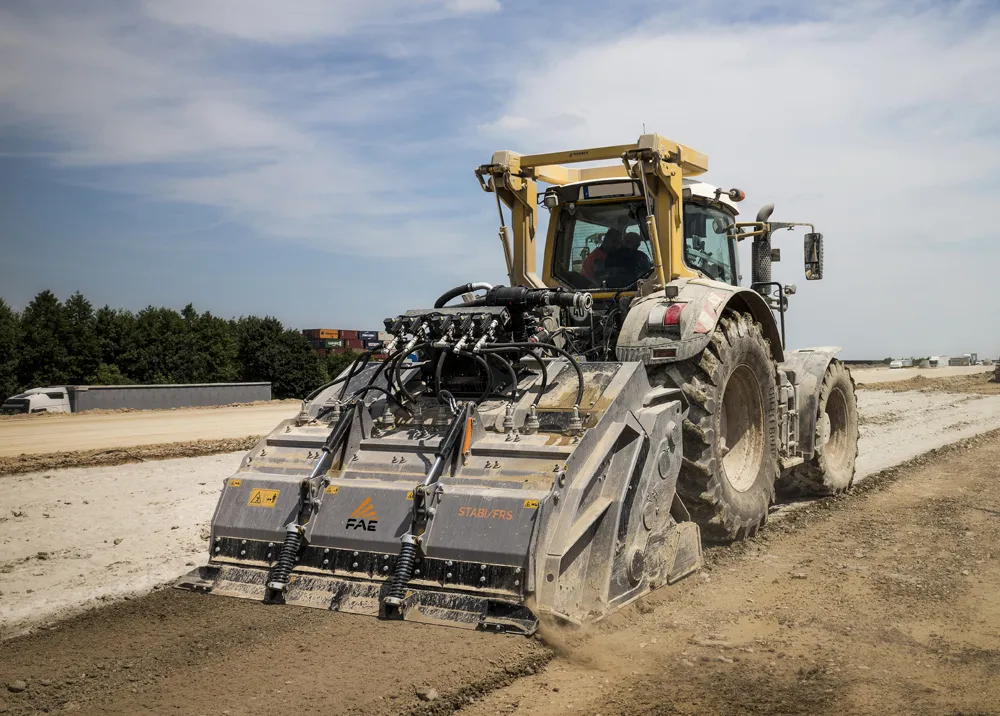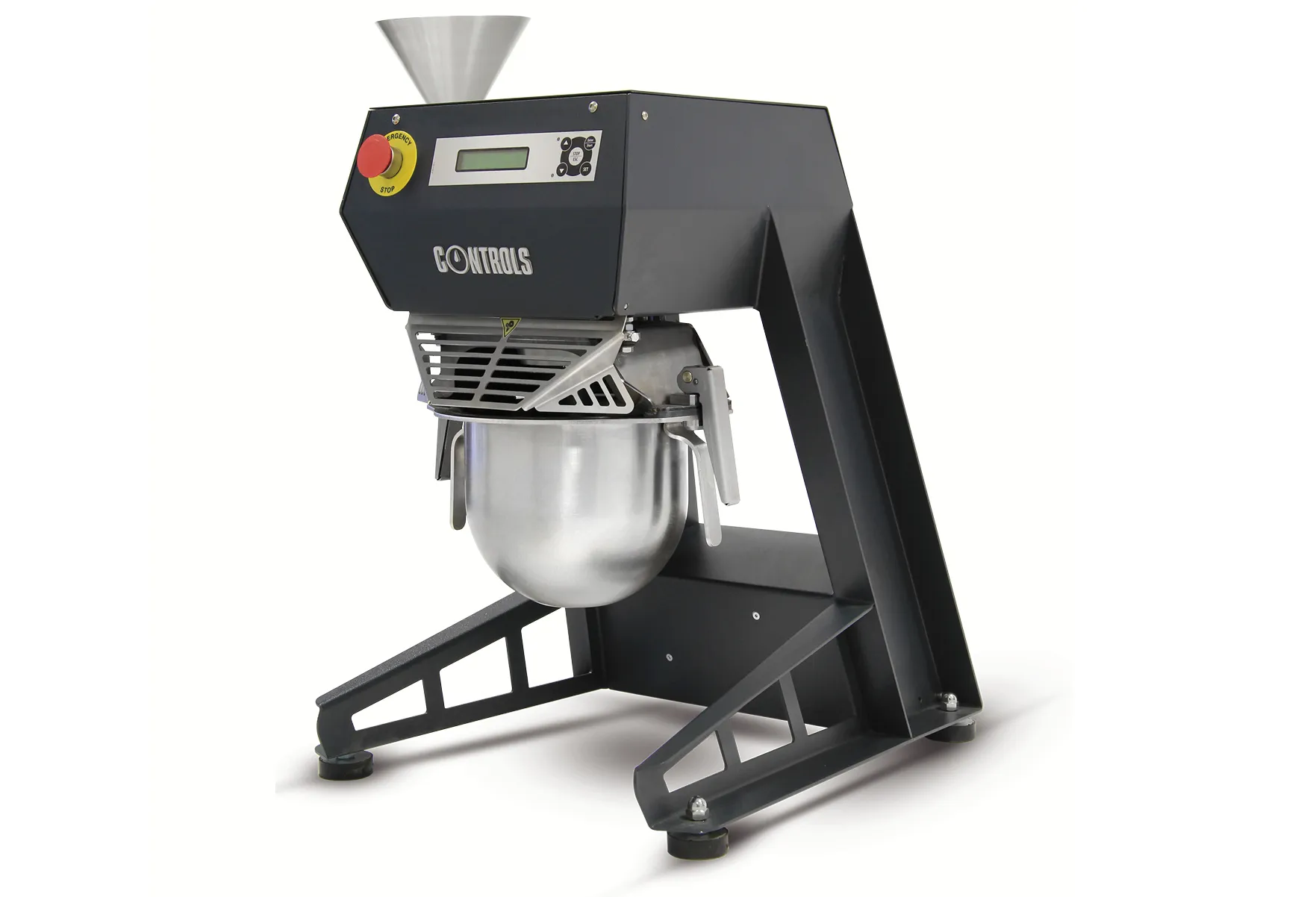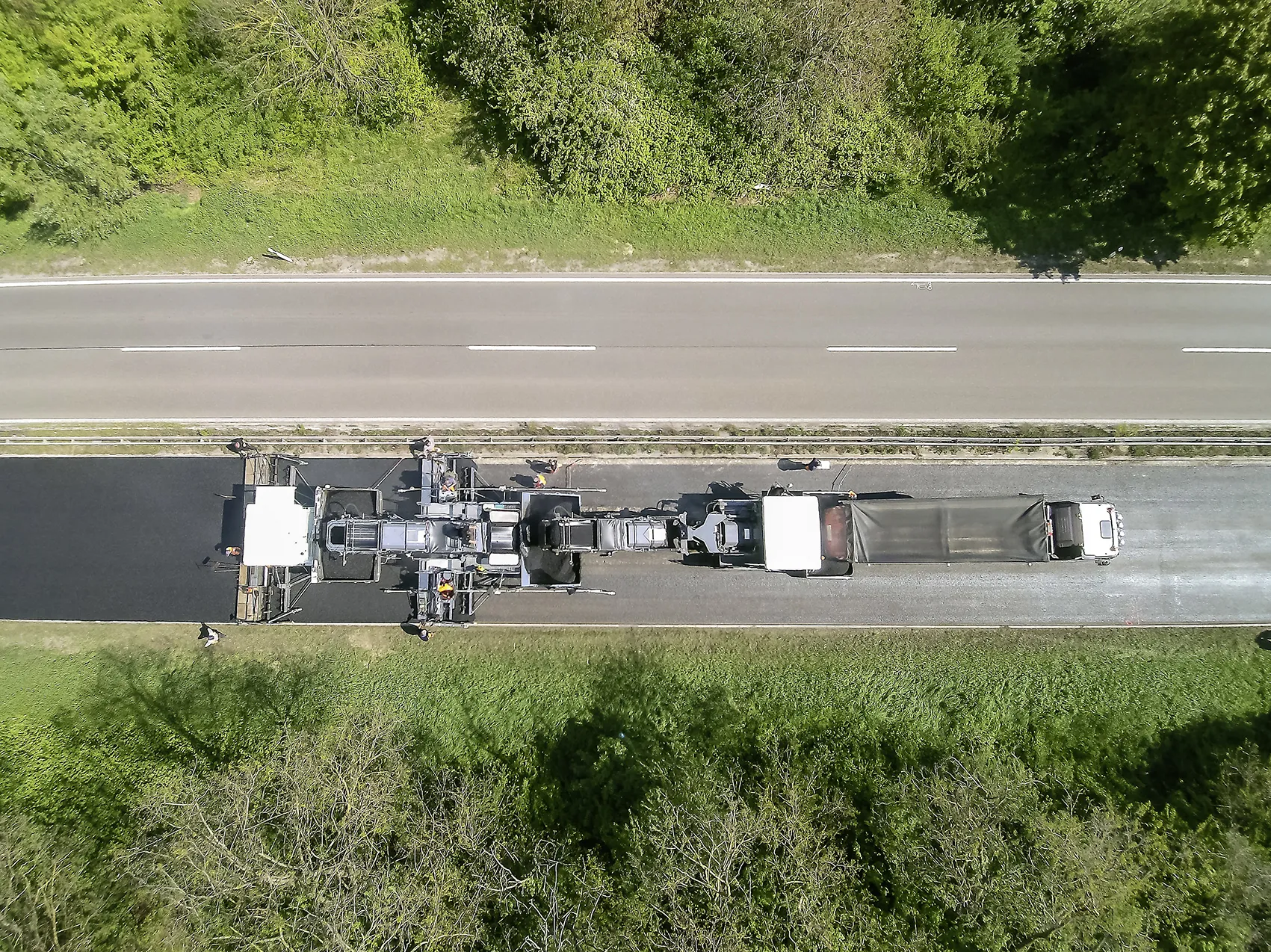
The STABI/FRS and the STABI/FRS/HP feature a fixed-rotor system, operating depth up to 600mm and are compatible with tractors from 224-373kW.
Suitable for small worksites and large infrastructure works, the STABI/FRS features a new rotor for improved stabilisation, while using less power. The new mixing chamber allows processing of all types of soil. The structural frame uses special materials such as tungsten-carbide and Hardox to boost wear resistance.
The STABI/H and STABI/H/HP units are designed for tractors rated from 224-373kW and feature variable geometry chambers and operating depths down to 500mm. The next-generation stabiliser, the STABI/H, is designed for challenging applications and benefits from a new design of rotor and tooth holder developed by FAE. The variable geometry chamber and transmission built into the rotor allows material to be processed with precision and quality.
For all four models, FAE offers the new A/3 teeth as standard and A/3/HD teeth as options, as well as the optional F/3 and F/3/R range. Both ranges can be used with the automatic full control system (FCS) to optimise material mixing and moisture content.








